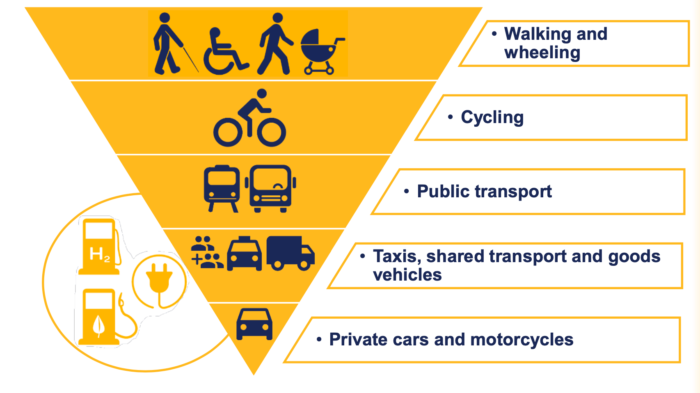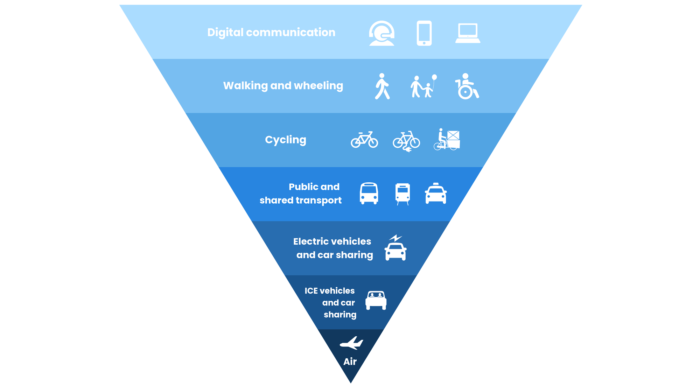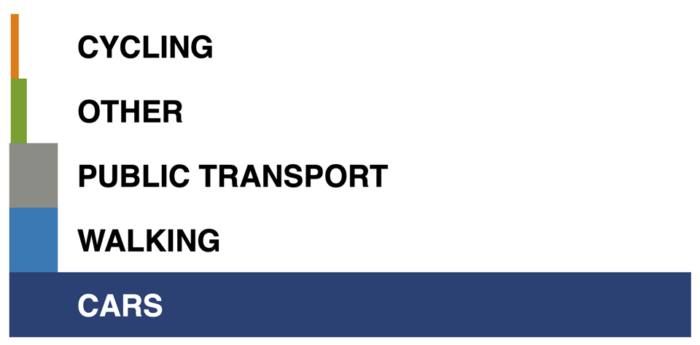Our analysis of the 3,500 tweets and retweets up to the 14th August 2022, from the Department for Infrastructure’s Twitter account, showed that “EV” appeared just 3 times.
2 of those tweets were around Electric Buses, leaving a solitary communication on EVs in the previous 9 months, indeed only a retweet at that. That’s just 0.03% of messages, from the department responsible for transport and EV Infrastructure here.
Over the same period, the department gave one cycling and walking charity 50 times that coverage, averaging 5.5 mentions per month.
DfI Press Office
We got in touch with DfI’s press office in July this year asking for a meeting to discuss this issue. The press office refused our request.
But why even worry about DfI’s social media account you may ask. Well, it is a window into the department’s internal thinking on policy, a direct display of where they believe their priorities lie. In this case proving, if any further proof were needed, that it has very few aspirations around the transition to electric vehicles here.
Sustainable Travel Hierarchy
Most people would agree that increasing active travel is a great goal and in 2020 DfI announced the appointment of a new “walking and cycling Champion“. But where is the “EV Champion” within the department? We would question how many of the officials that are serving as policy advisors have sat in an EV, let alone driven one.
DfI often refer to this ‘sustainable travel hierarchy’ diagram.

But what is DfI’s target for this modal shift away from the car? The absence of any details, targets, dates or other metrics makes it impossible to quantify this diagram’s aims. The version below from the Energy Saving Trust at least separates EVs from ICE vehicles. The version DfI uses makes no distinction.

Things become clear when we take a look at DfI’s latest Travel Survey data (2020). The diagram below is drawn to scale, showing the actual way people get around in Northern Ireland – 84% of miles travelled here are by car, 6% Walking, 6% Public Transport, 2% Other and 1% Cycling.

The department is spending tens of millions each year on much needed improvements for public transport and active travel, but only a few hundred thousand on EV infrastructure projects.
As we look to Scotland, and the tens of millions already spent, with tens more committed, the contrast couldn’t be more stark. Transport Scotland has shown the way, while DfI have allowed the situation to disintegrate here.
Climate Change Committee
But is this move to EVs really that important? The Climate Change Committee is an independent, statutory body established under the Climate Change Act 2008, setup to advise the UK and devolved governments. Here’s a statement from their 2020 EV briefing document;
The full transition to electric vehicles (EVs) will be one of the most important actions to achieve the UK’s Net Zero target
One. Of. The. Most. Important. Actions.
Northern Ireland recently got a virtual rap across the knuckles from the CCC when they published their progress report in June this year which singled out the Executive’s dismal performance, recommending that they;
Support the deployment of public charge points across Northern Ireland, to address the issue that Northern Ireland currently has the fewest EV charge points per capita of any of the UK nations..
An embarrassing public confirmation of policy failure here.
Graph of Shame
The current situation that Northern Irish EV drivers find themselves in is aptly illustrated by these latest rapid charger figures for the UK (Dept for Transport, July 2022).
We have 6 times fewer Rapid Chargers compared to the next placed region, we are around 8 times behind the GB average and almost 14 times lower than Scotland. Has a lack of competent policy ever been more clearly demonstrated in graphical form.

Holding Up Investment
As a group we are buoyed by the recent investment announcements here. However, some unique NI policy is undermining the progress of those trying to make improvements, particularly around the Connection Pricing Policy, which is explained well in the video below and in this paper. It urgently needs to be addressed by DfE and the Utility Regulator working together with the DNO. But DfI are the lead on transport here and must be more proactive in removing the hurdles to progress.
Does feign Interest
While the current lack of an Executive is obviously a huge hindrance to progress, actions around EV issues during the previous term were hardly any better.
We recently requested meetings with both the DfI and DfE Ministers. We met with Minister Gordon Lyons on 30th August, but Minister John O’Dowd refused our request (twice), due to “diary commitments”. That’s despite already holding meetings with multiple similar groups including – Into The West Rail Lobby, Inclusive Mobility and Transport, Rural Community Transport Partnerships and Sustrans NI. We did meet with the Permanent Secretary on 22nd September, but came away with an even stronger impression that DfI has little interest or ambition around the transition to electric vehicles here.
The Climate Change Act will finally force the department into action, although the deadline for the first Climate Action Plan isn’t until June 2024.
In the meantime we’re not looking for someone that Does feign Interest. We desperately need the next DfI minister to walk the walk, not just talk the talk. An EV champion to get their sleeves rolled up and eradicate the EV apathy at the heart of the department responsible for transport in Northern Ireland.


No responses yet